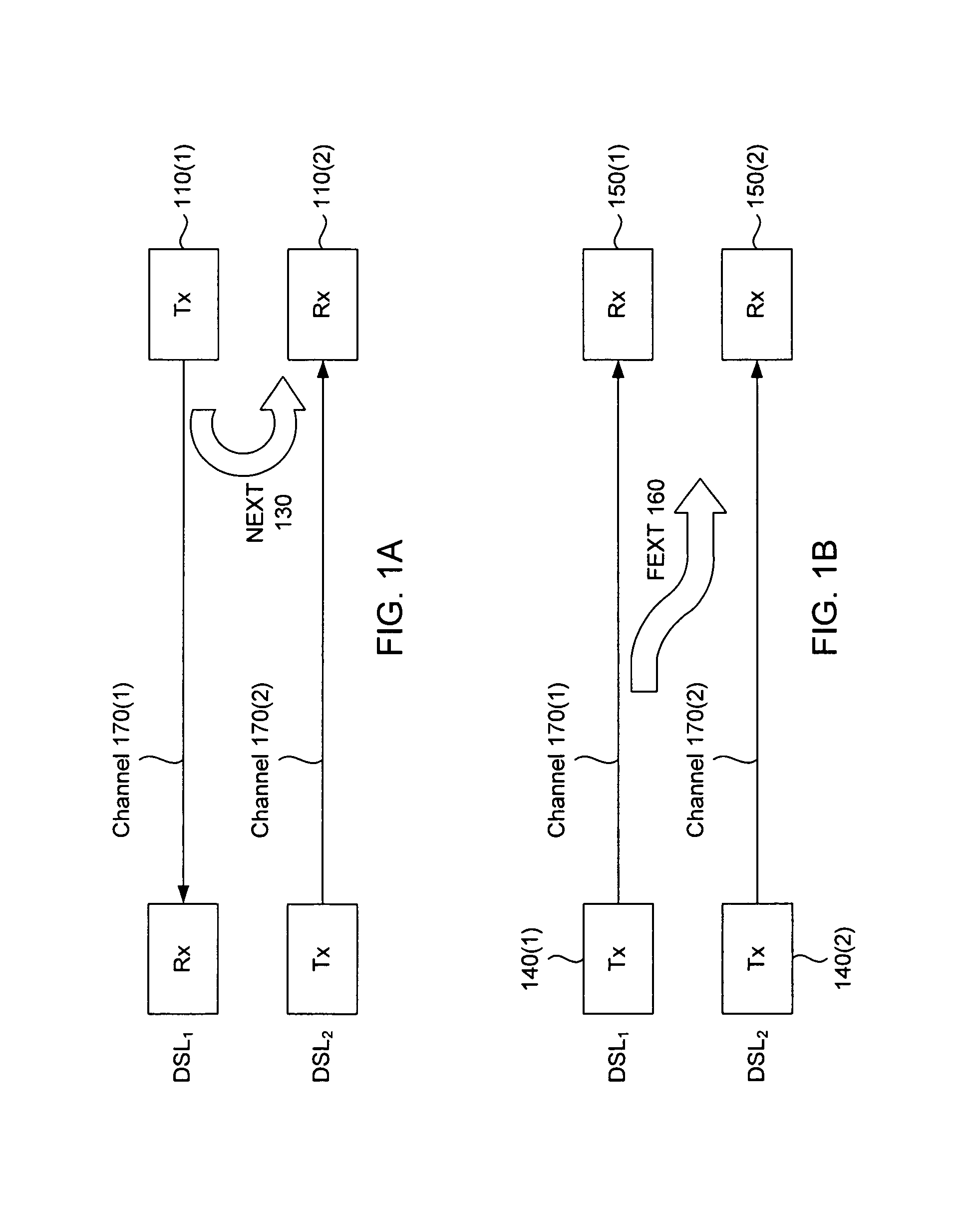Joint reduction of NEXT and FEXT in xDSL systems
a technology of xdsl and fext, applied in phase-modulated carrier systems, frequency-division multiplexes, line-transmission details, etc., can solve problems such as crosstalk interference, crosstalk interference, crosstalk interference, etc., and achieve the effect of reducing or eliminating crosstalk interference in transmitted signals
- Summary
- Abstract
- Description
- Claims
- Application Information
AI Technical Summary
Benefits of technology
Problems solved by technology
Method used
Image
Examples
Embodiment Construction
[0030]Methods, techniques, apparatus, products, devices and protocols appropriate for implementing a system for jointly eliminating or mitigating the effects of NEXT and FEXT in xDSL systems will now be described in detail with reference to preferred embodiments thereof and as illustrated in the accompanying Figures. In the following description, specific details are set forth in order to provide an understanding of the present invention. It will be apparent, however, to one skilled in the art, that the present invention may be practiced without some or all of these specific details. In other instances, well known process steps, components, features and / or aspects of the invention as presented have not been described in detail in order to avoid unnecessarily obscuring the present invention.
[0031]Briefly, the present invention constitutes the joint reduction of NEXT and FEXT in combination in synchronized TDD DSL systems using known synchronized TDD DSL NEXT mitigation / removal techni...
PUM
 Login to View More
Login to View More Abstract
Description
Claims
Application Information
 Login to View More
Login to View More - R&D
- Intellectual Property
- Life Sciences
- Materials
- Tech Scout
- Unparalleled Data Quality
- Higher Quality Content
- 60% Fewer Hallucinations
Browse by: Latest US Patents, China's latest patents, Technical Efficacy Thesaurus, Application Domain, Technology Topic, Popular Technical Reports.
© 2025 PatSnap. All rights reserved.Legal|Privacy policy|Modern Slavery Act Transparency Statement|Sitemap|About US| Contact US: help@patsnap.com



